This post provides the necessary feedback to understand the lunar calendar, its stages and what to do during these phases; gradually, you will be able to deal with Gea Seeds Lunar Calendar Mobile App.
Generally, lunar calendars are based on lunar phases: new, crescent, crescent quarter, rounded declining, full, declining quarter and declining; depending on the lunar phase, plant growing will be different.
Gea Seeds calendar is based on the distance from the Earth to the Moon, so we can calculate the most suitable procedure for the plants, that is, at any time, the adequate procedures are determined by the lunar orbit related to the Earth; our calendar is based on the following phases of the solar orbit solar: peak, perigee and nodes; next, we analyze what happens during these phases and, then, different procedures during these phases are described.
Solar orbit phases:
Peak: on this day of the month, the Moon is in the farthest orbital zone from the Earth.
- – Minor gravitational waves.
- – Less luminosity.
- – Sap and resin flow are concentrated on the roots.
- – This stage is germinable.
- – Root development is more active than leafy; good moment for trimming, transplants and cuttings.
- – In both phases, fungicides are very effective.
Perigee: on this day of the month, the Moon is in the nearest orbital zone to the Earth.
- – The gravity on the Earth is bigger.
- – Light density is 20% higher.
- – Sap and resin flow are concentrated on the leaves and flowers, especially on top of them, so cropping is available.
- – Good leafy activity; trimming and cuttings are not suitable, because auxins (natural root hormone) are very low, too weak to root properly.
- – Good moment for plant fertilizing, and for insecticides and fungicides.
- – The plants grow slowly, and are more vulnerable against plagues, fungi or illnesses. On perigee, you do not have to prune, cut or implant. .
Nodes: every fourteen days and twelve hours, the orbit of the Earth and the Moon coincide, known as node; whether the Moon is ascending or descending, it is known as ascending node or descending node. Due to energetic disturbances, no plant working is suitable on that day, on the previous day and on the following.
- – Low leafy and root activity; plants can be fertilized, and be provided preserving procedures.
- – Germinating is suitable.
Stages:
On peak, perigee and nodes, the plants have to rest.
The Moon needs 27 days to surround the Earth totally; every month has one or two peaks, and one or two perigees. Peak and perigee days depend on the hemisphere, so time differences are important.
For example, if, in Spain, August perigee is on the third day at 4 a.m., in Argentina, with 6 hours less, it will be on the second day at 10 p.m. Lunar phases are also useful for supermoons and other astronomical phenomena.
If you want to control everything on lunar calendar, download Gea Seeds Lunar Calendar App, and become an expert with us.
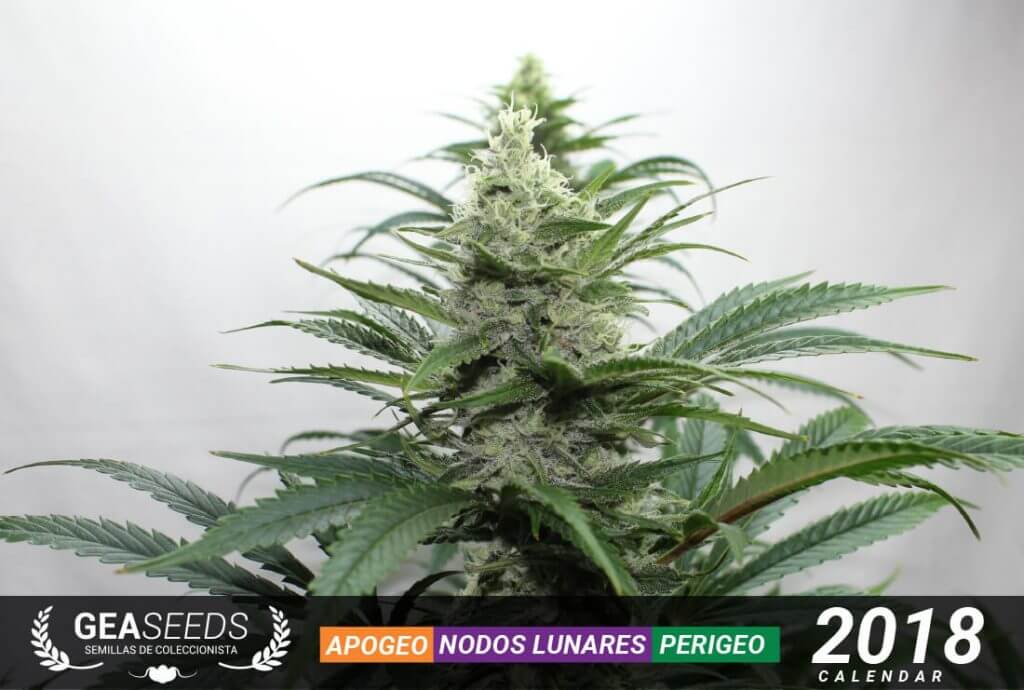
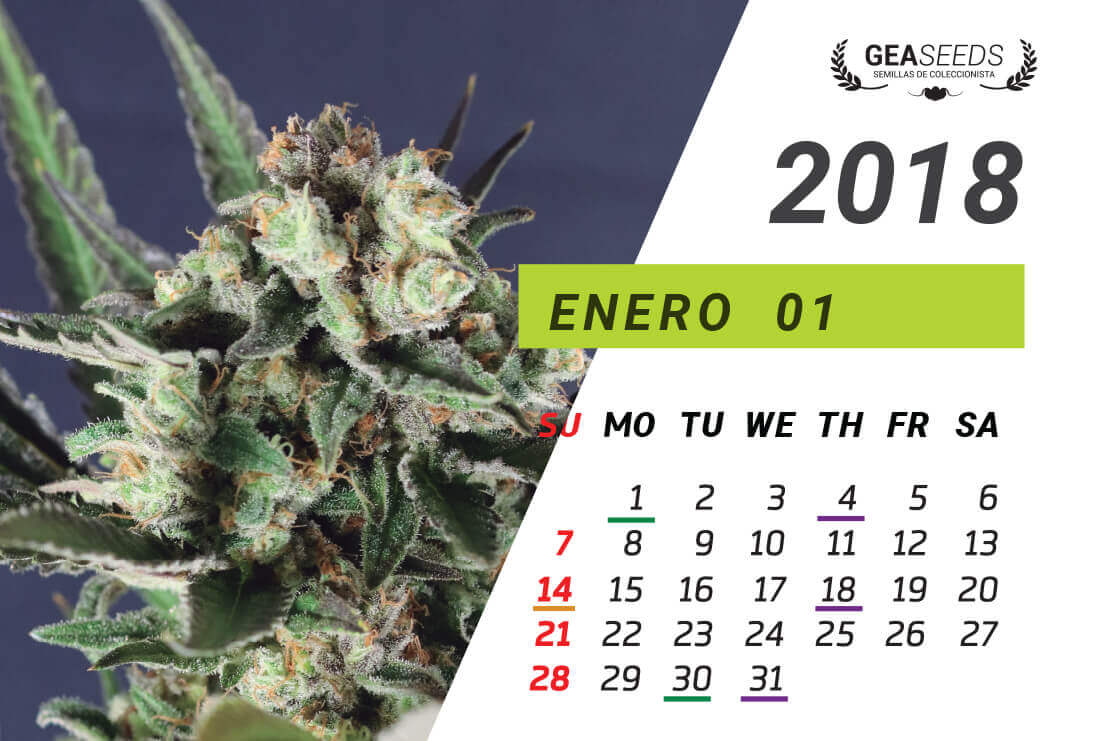
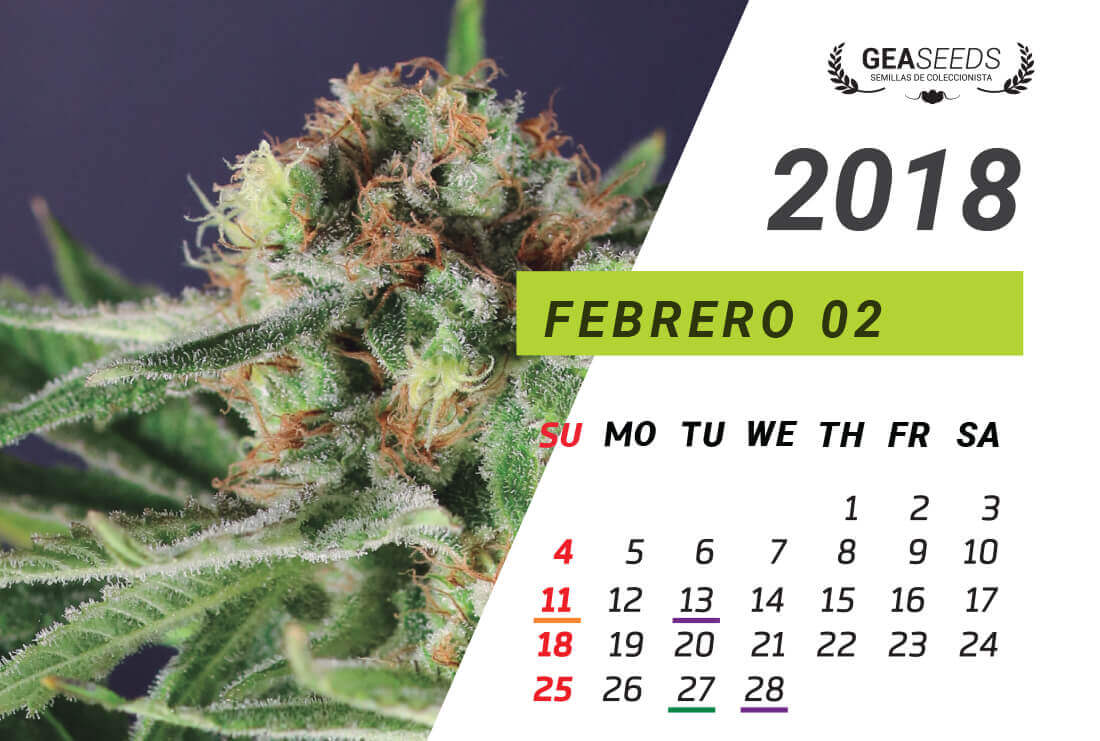
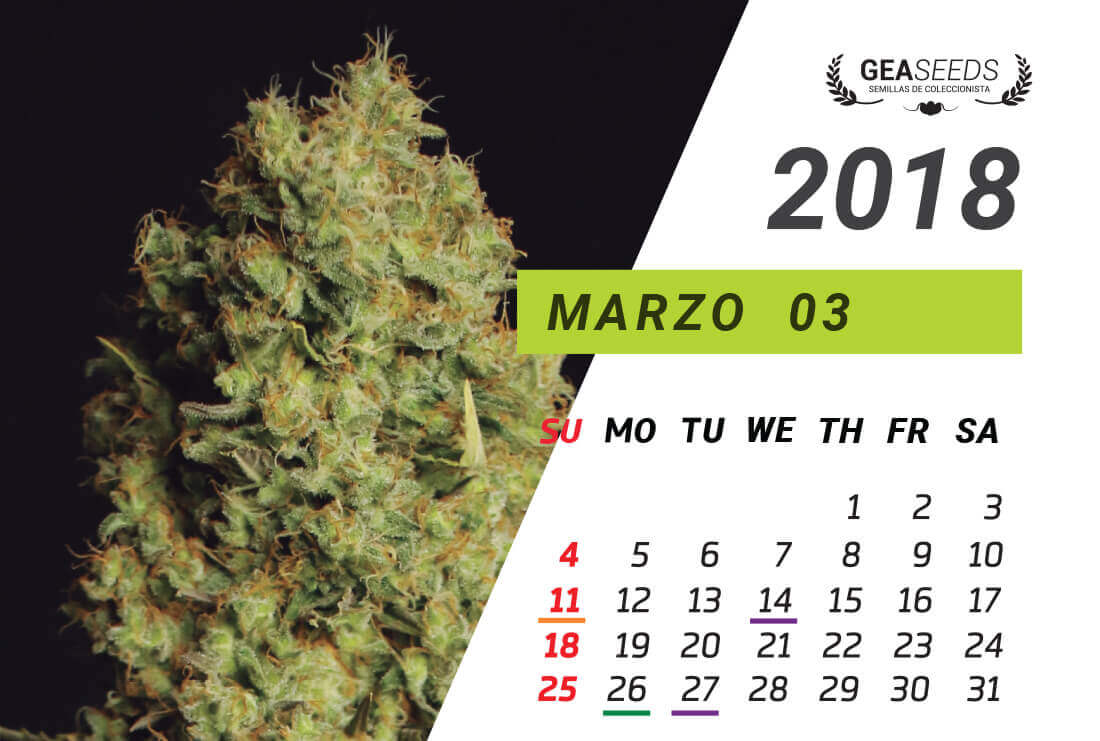
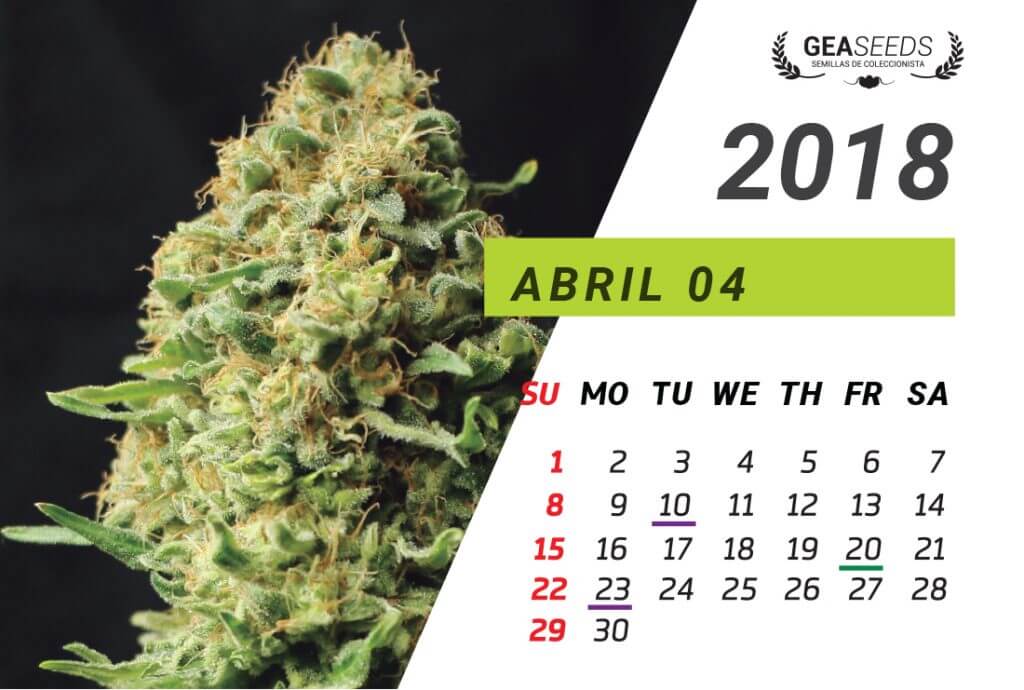
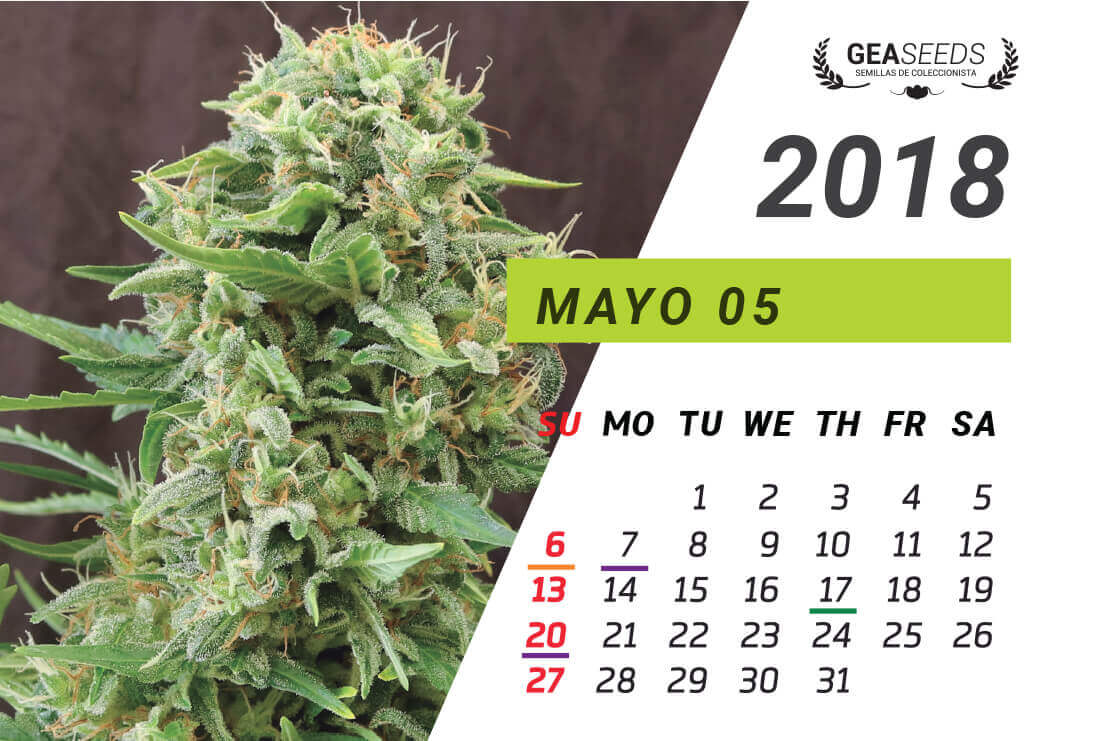
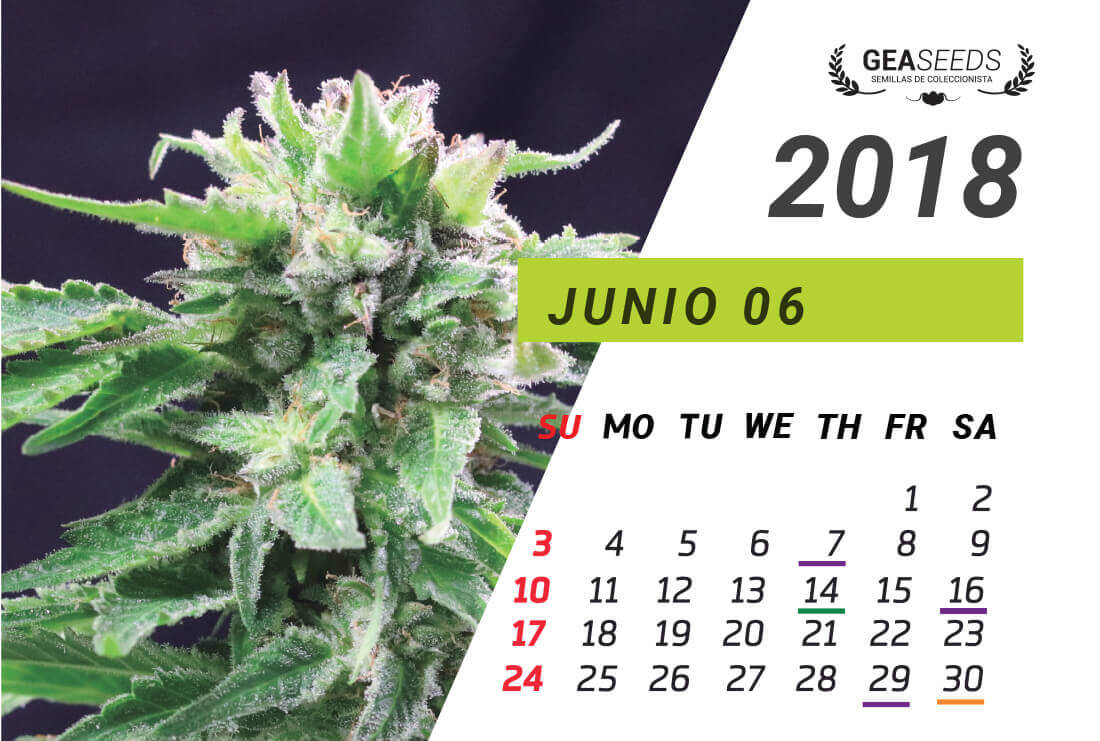
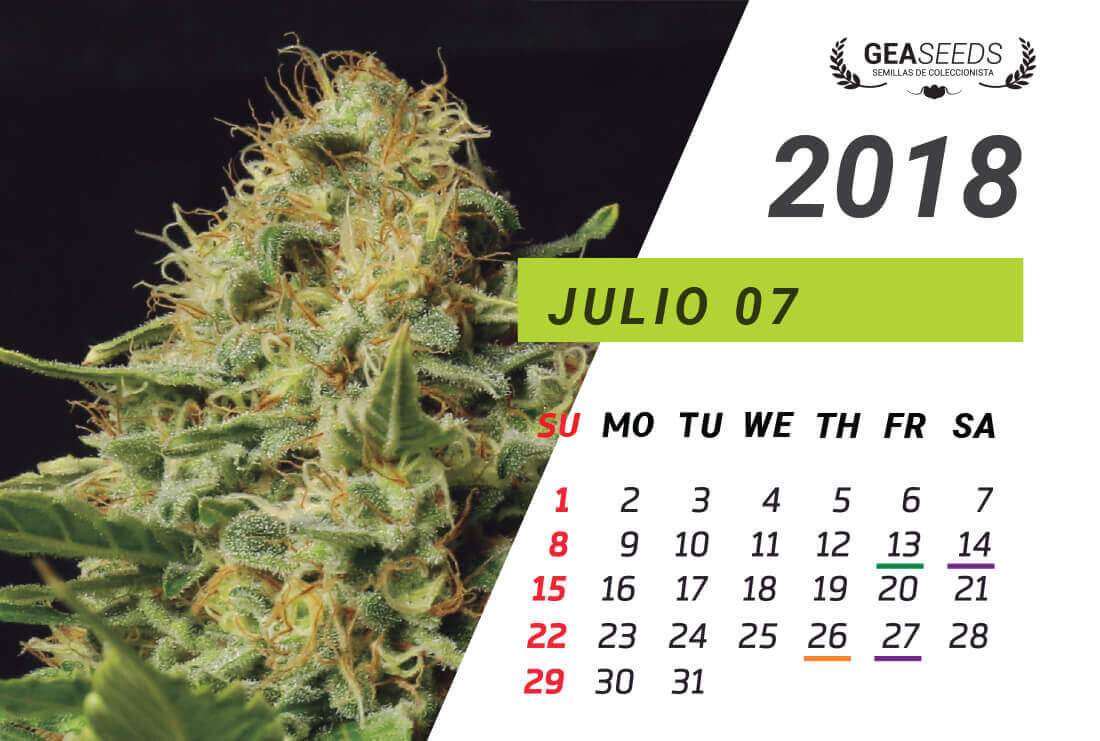
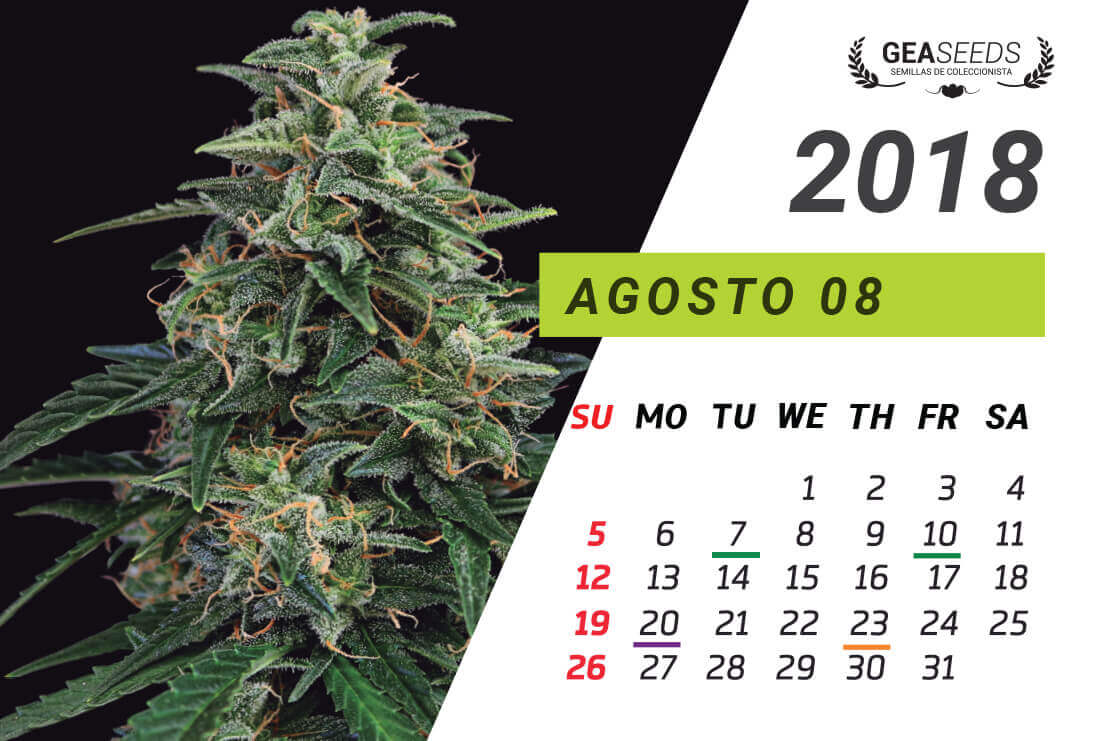
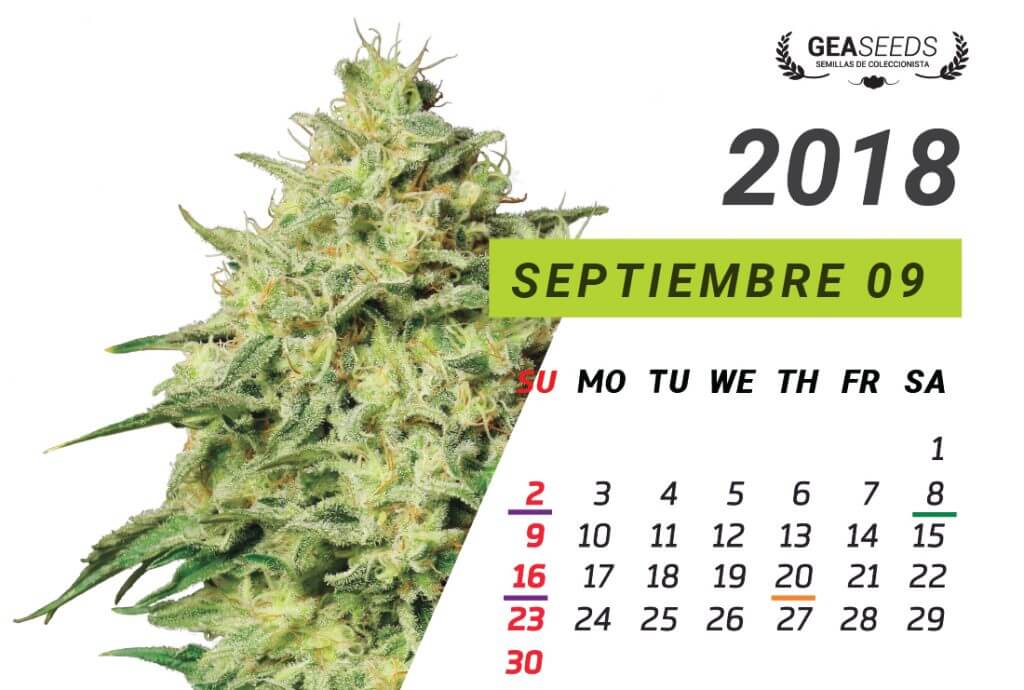
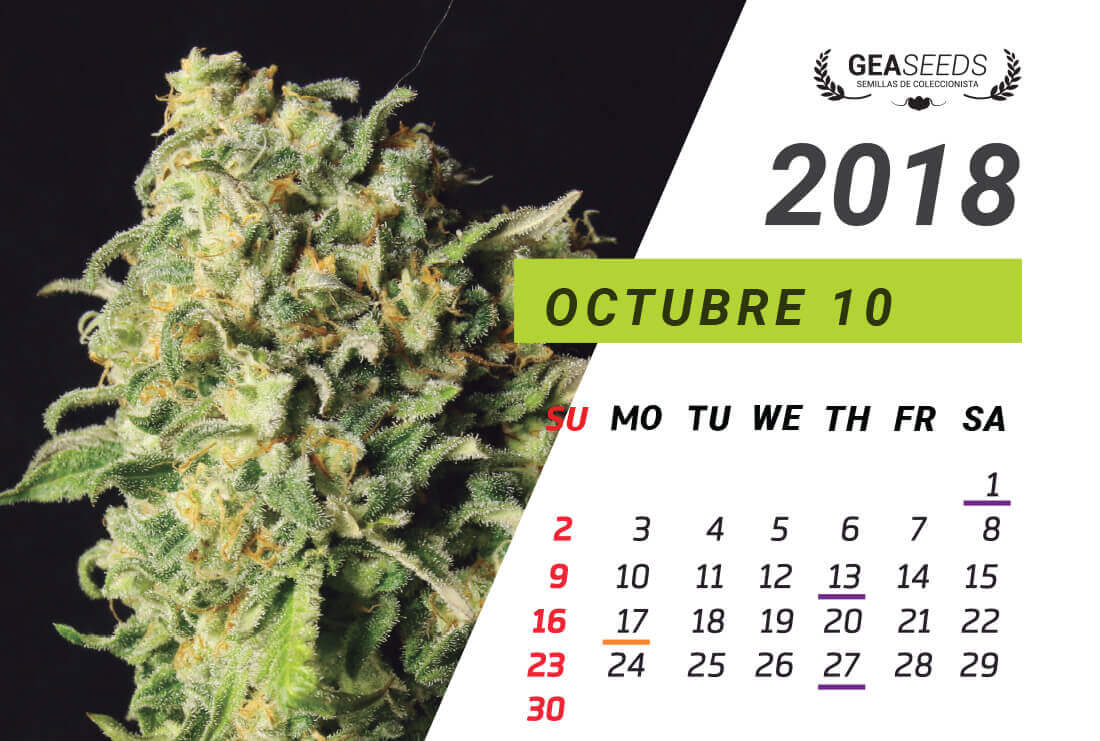
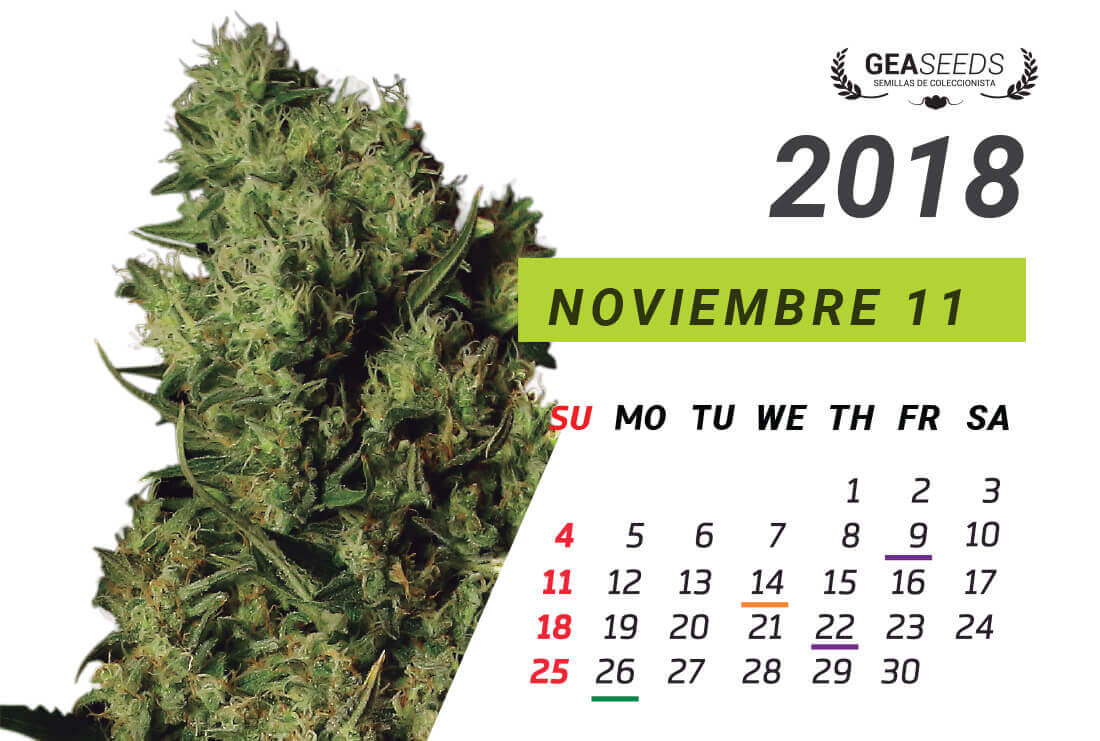
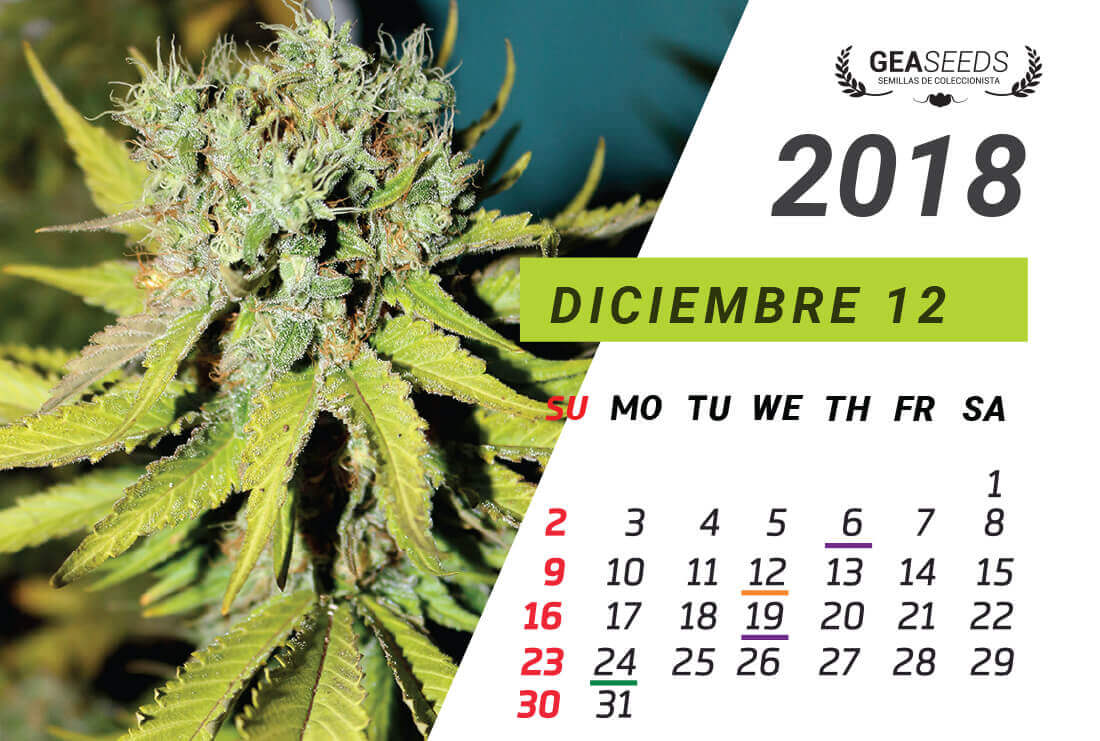
Our last year’s article
Here you have the article that was written last year related to the Lunar Cannabic Calendar of 2017, in which we comment a little on its functioning and the different cycles of the moon in the 12 months.
Lunar calendar has been used by almost every civilization from the beginning of History, in order to calculate the years, according to lunar cycles; from the early civilizations, Egypt and Mesopotamia, as well as pre-Columbian American civilizations, Greeks, Romans, Celts, Arabic or Asians: all these civilizations, even more, have used this calendar to calculate the time, seasons, tides or crops.

Regarding the crops, lunar calendar is interesting for our growing purposes. The influence of the Moon on the Earth also affects plant sap; according to lunar position, the liquid circulating through the conducting vases of the plants will concentrate in the root or ascend to the leaves or stems, so lunar calendar is an important factor when growing our crop.
CANNABIS CALENDAR ’17 Spain. Northern hemisphere.
As previously mentioned, the working of this calendar is based on lunar cycles; these phases can be divided into four main cycles: full moon, declining moon, new moon and crescent moon.
Full moon
Firstly, full moon marks the half of the lunar cycle, and it is one of least recognizable phases, because lunar contour forms a perfect circle in the sky, and it is difficult to know when it is perfect and when it is not; at this part of the lunar calendar, the sap will accumulate in the foliage, increasing the plague risk. This is an ideal moment to plow and work the land, and to irrigate and fertilize the plants.
Declining moon
Secondly, just after full moon, declining moon comes; at this moment, lunar contour gradually reduces, and the plant sap concentrates in the roots, ideal moment for plant trimming, transplantation or grafting, and for low-germination plants.
New moon
Lunar profile is reducing, so we will have less lunar luminosity; new moon is near, so it is time to field irrigation. With new moon, the vital cycles of the plant remain paralyzed, so we have to leave the plant at rest.
COMPLETE 12-MONTH CALENDAR
- Cannabis lunar calendar ’17 – January-December
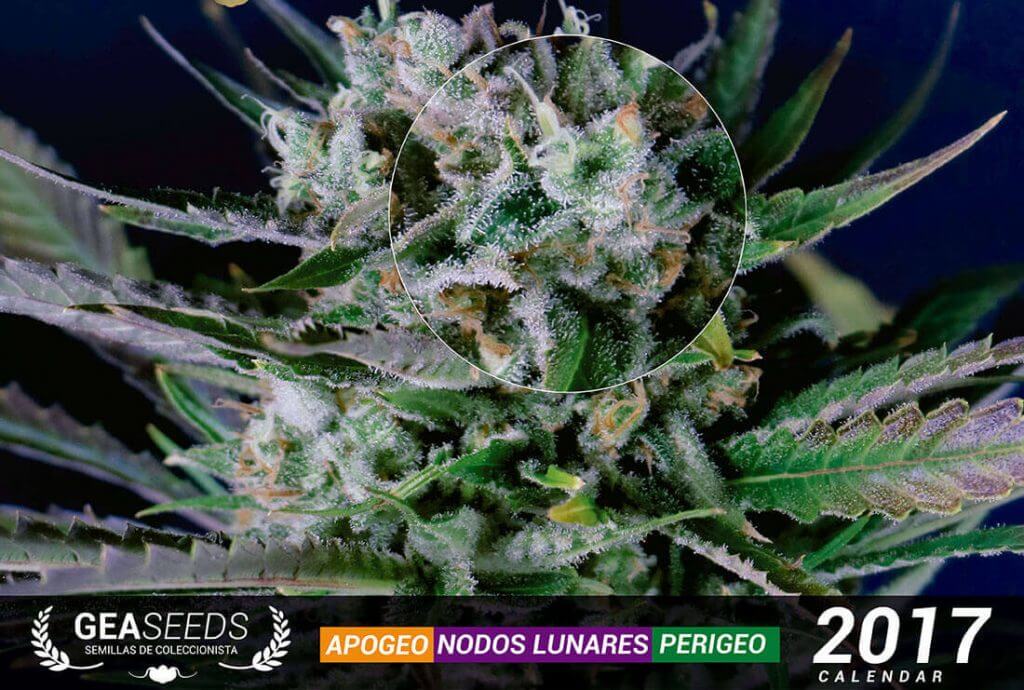
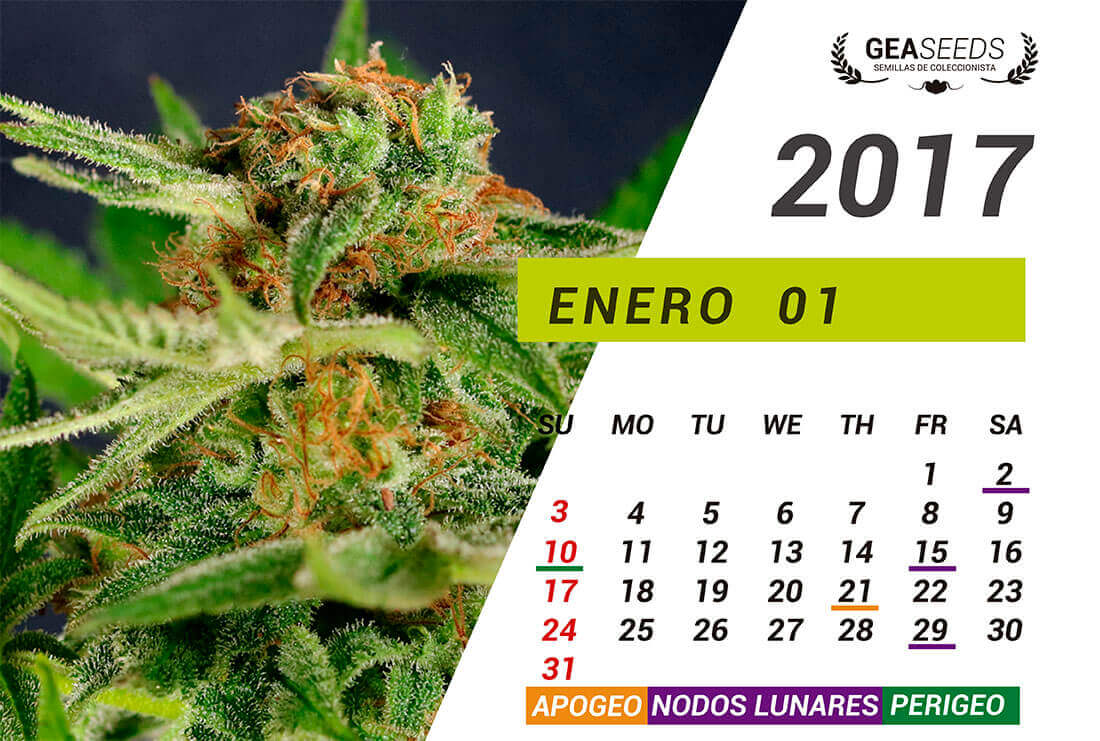
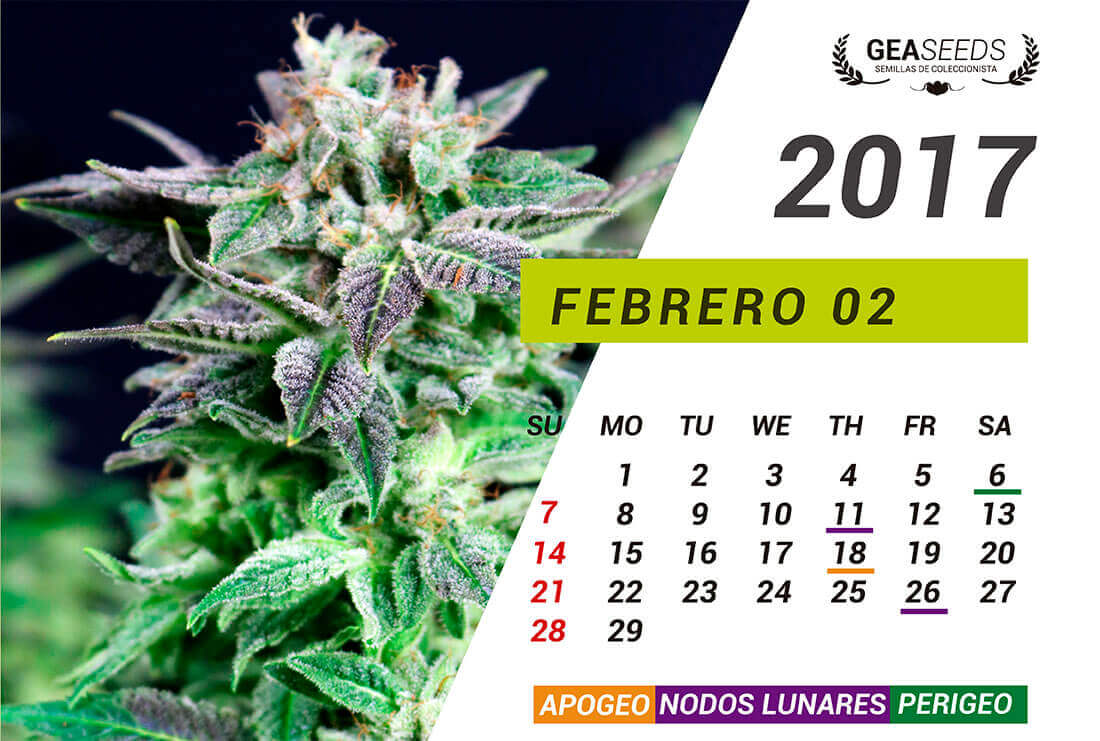
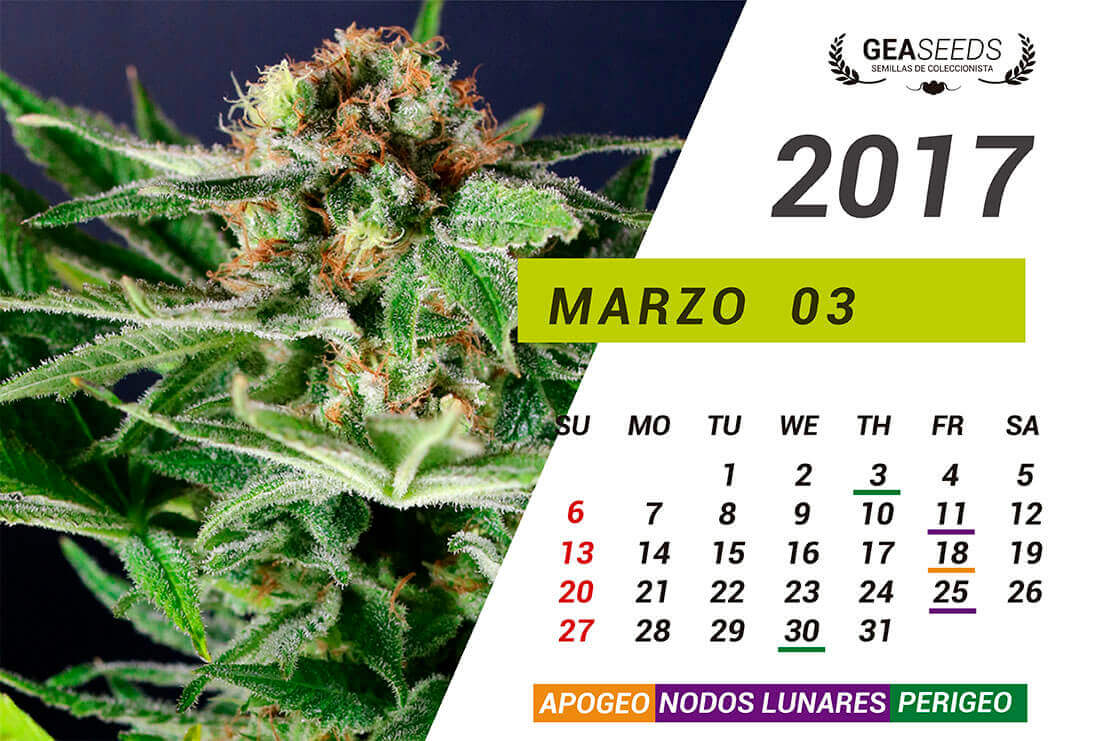
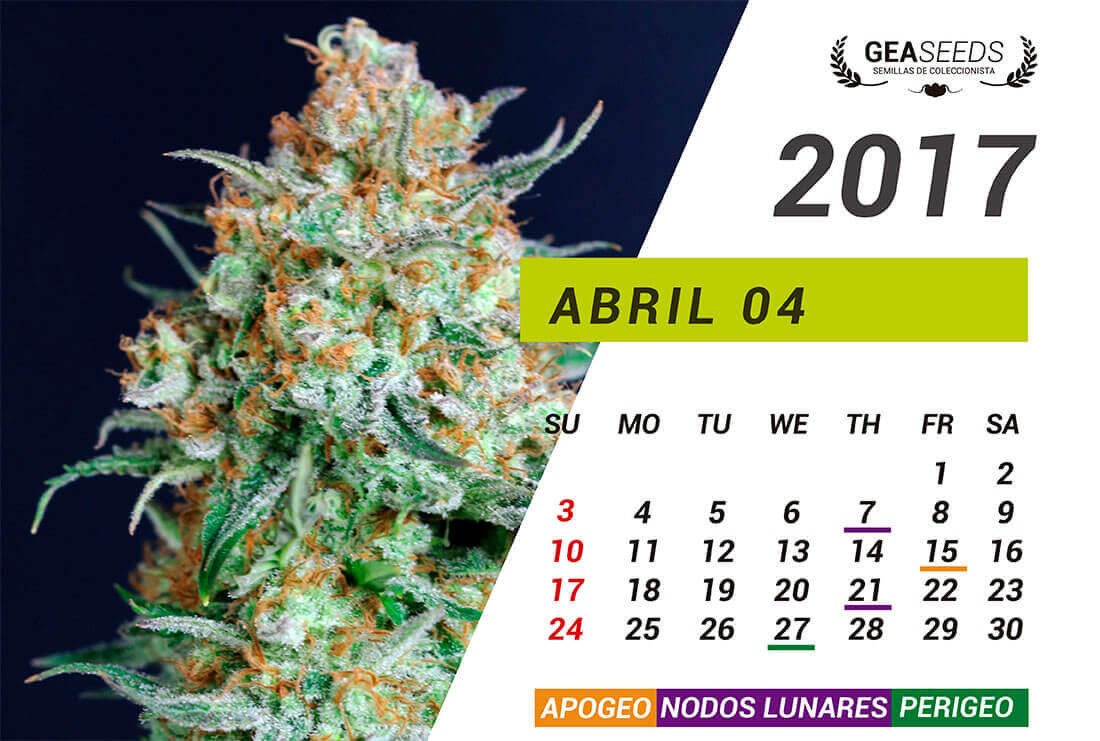
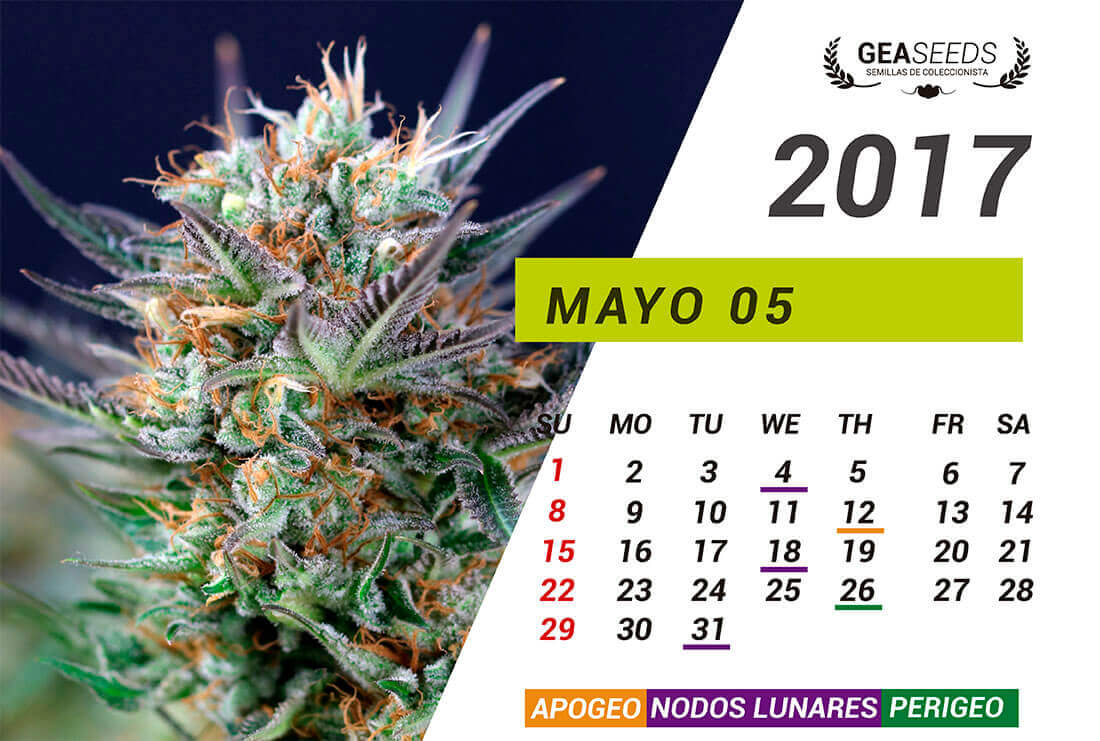
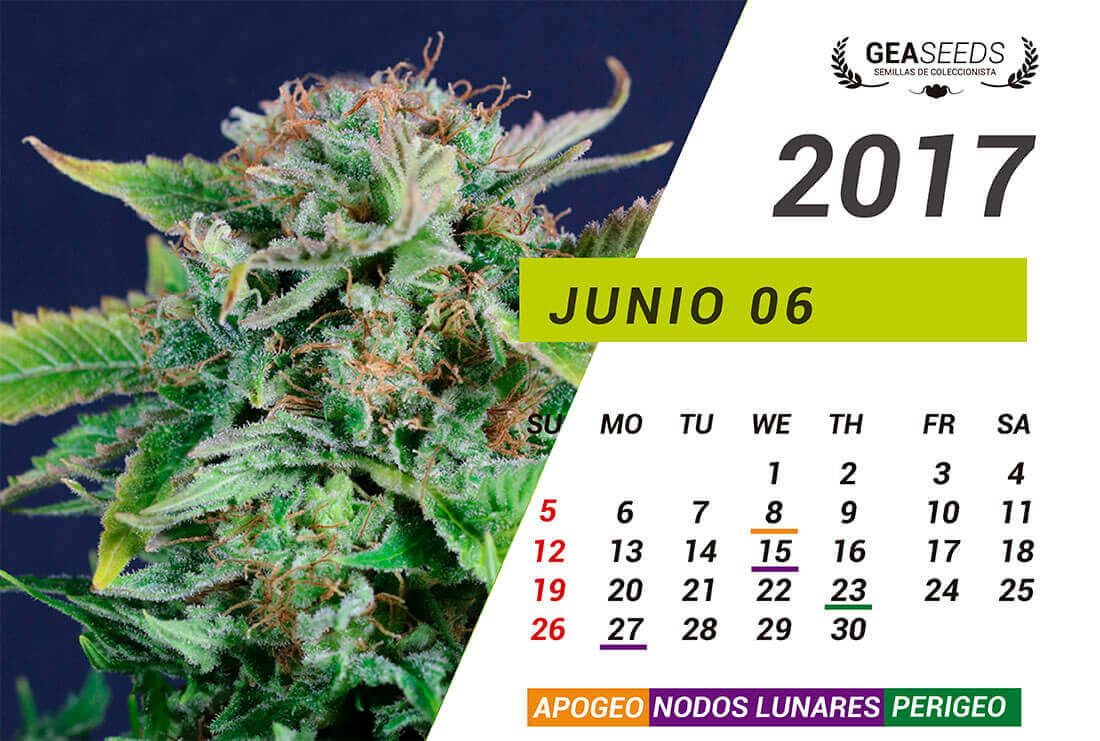
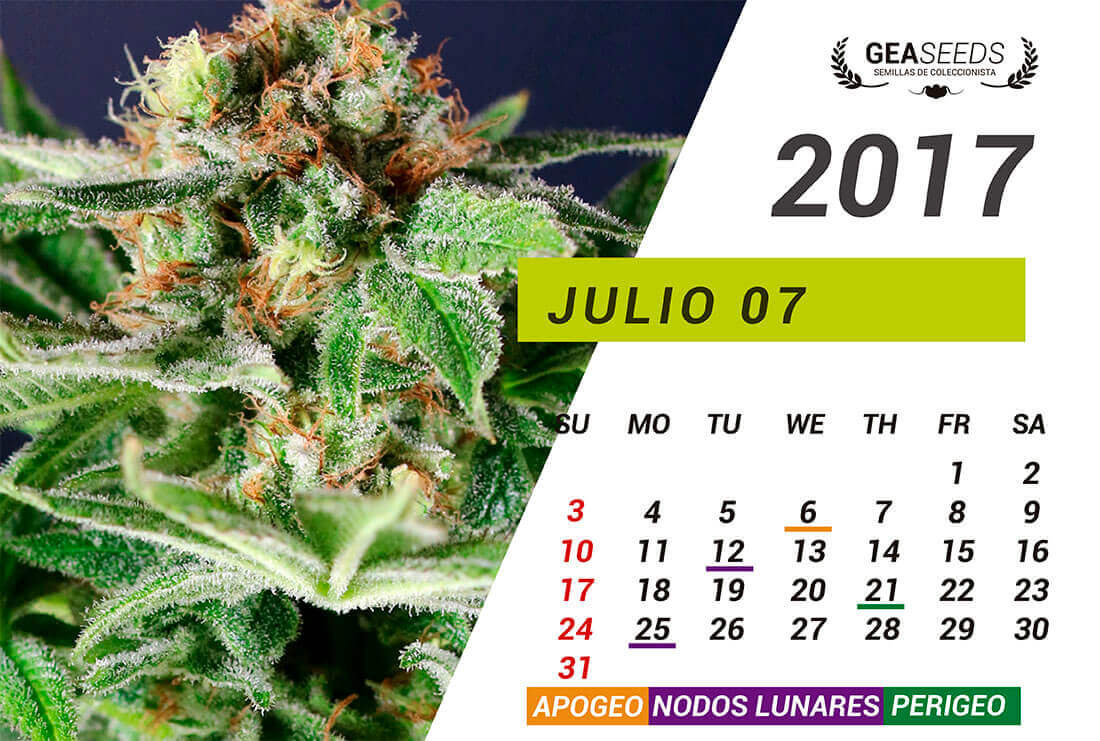
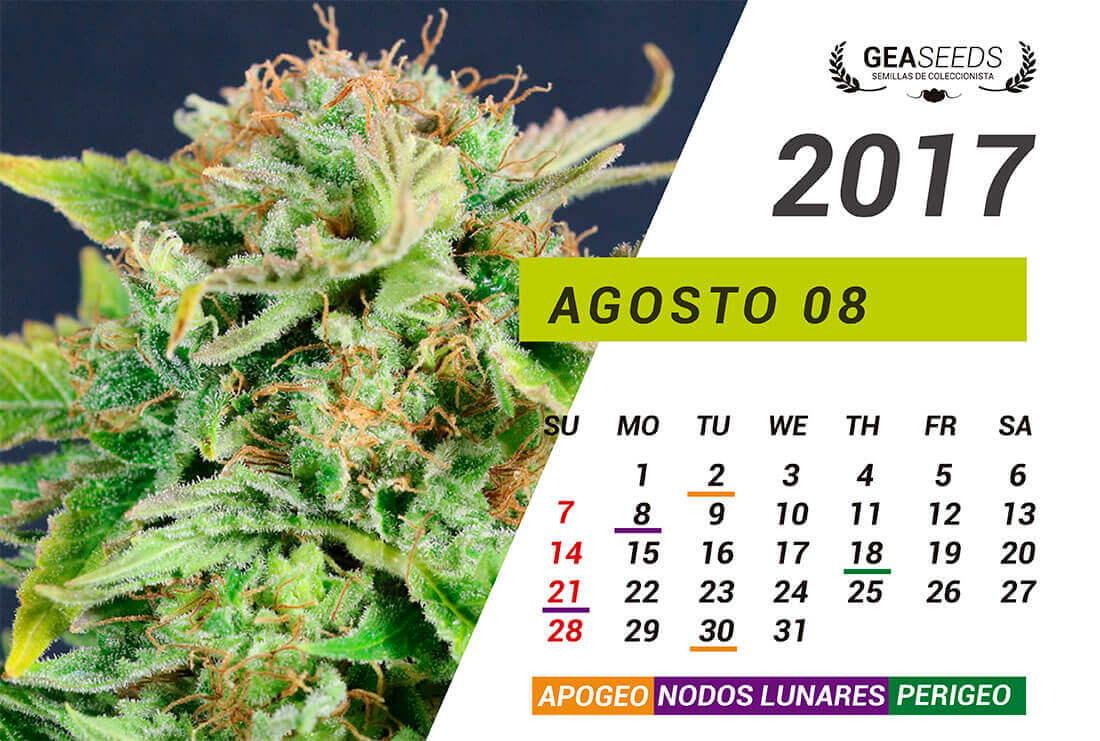
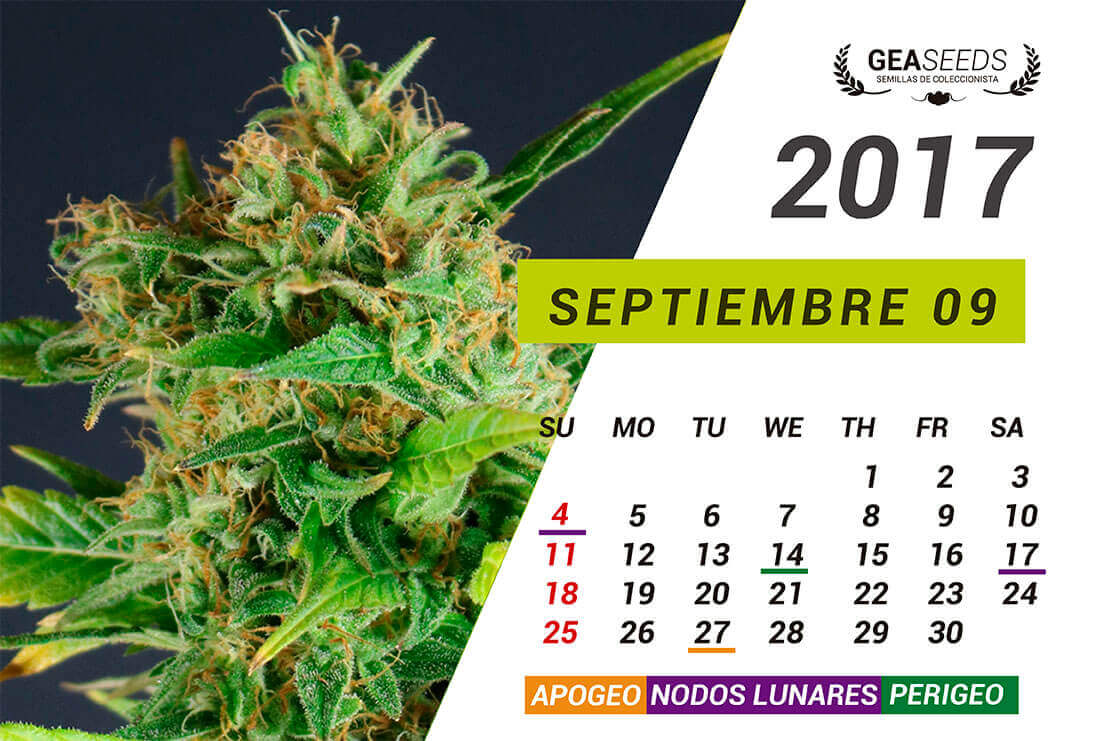
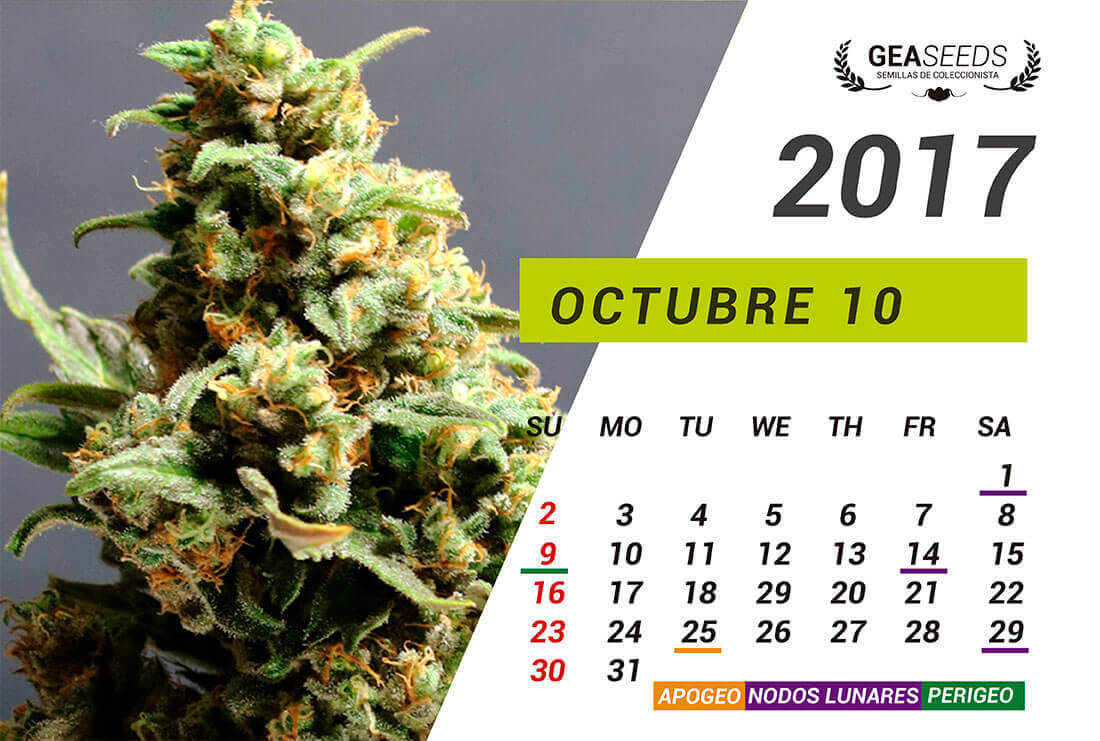
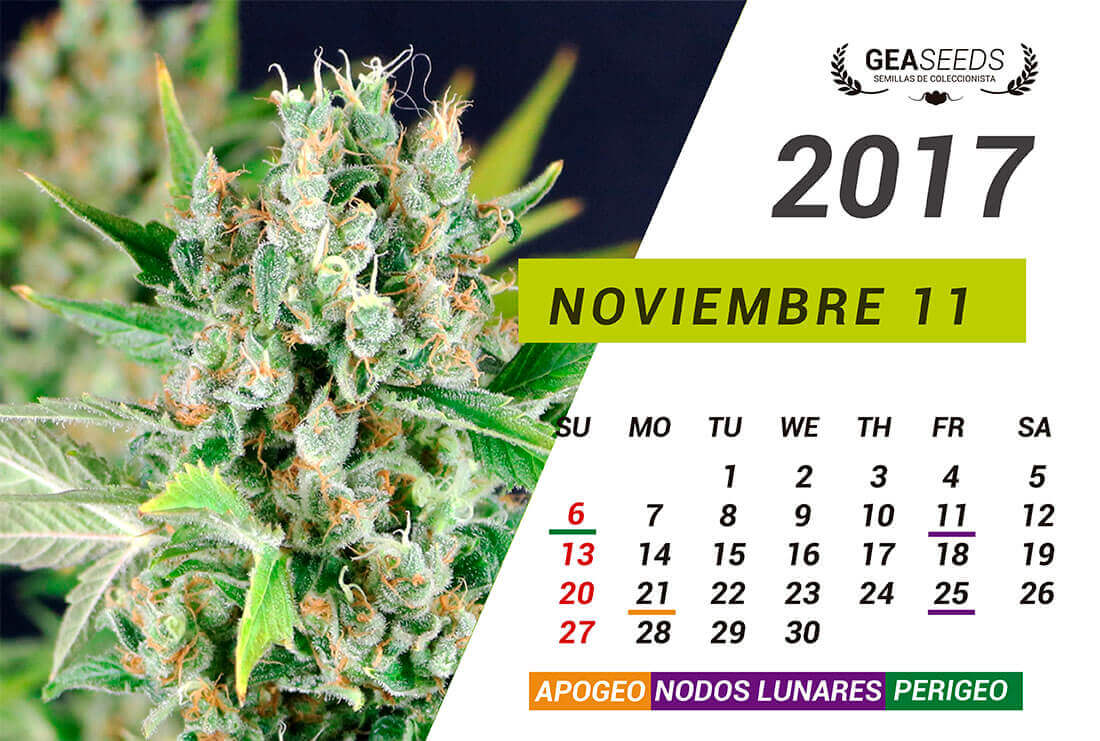
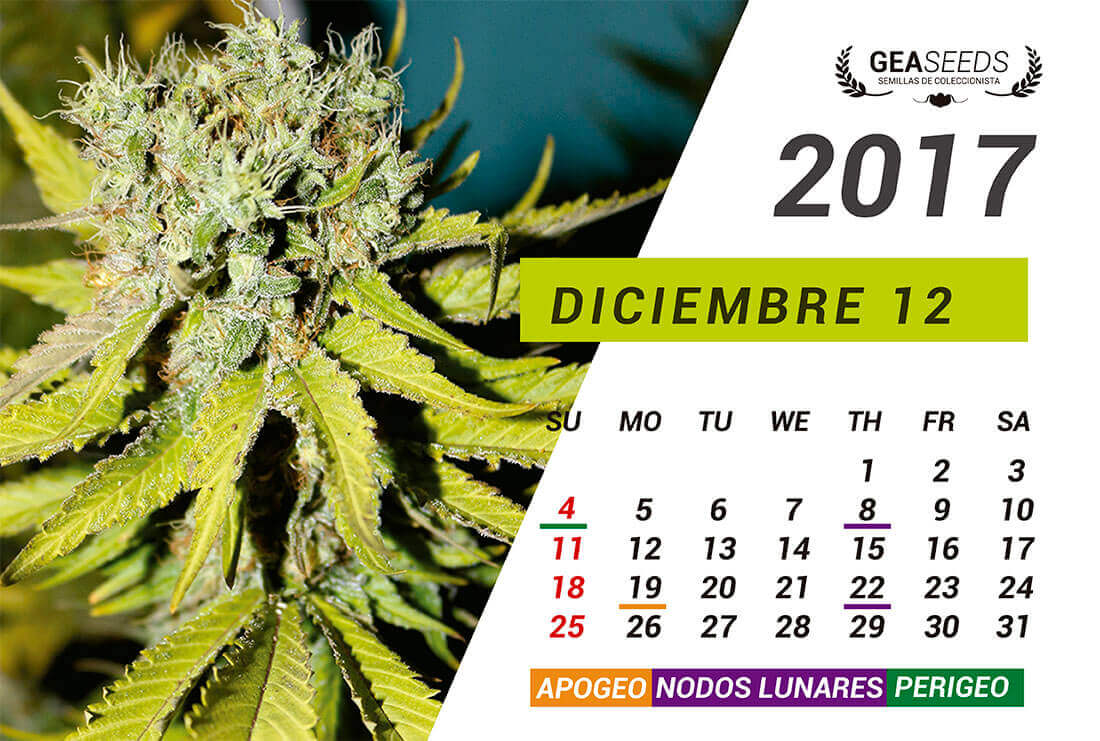
Crescent moon
Lastly, crescent moon is ideal for late plantations, crop irrigation and fertilizing, and garden maintenance; the planted vines will grow faster and more resistant to plagues, with less developed roots.
Expert growers focus on lunar cycles and lunar position relative to Earth; crescent (cutting), declining (seeding or fertilizing), nodes (at rest), and peak and perigee (the Moon is further or nearer).
This has been some advice to properly understand the influence of lunar cycles on our crop and its results; we wish it could be helpful for you. And, if in doubt, you can always consult any biodynamic lunar calendar ‘17.



